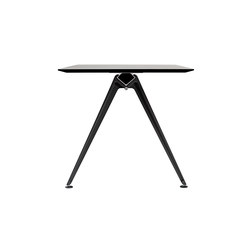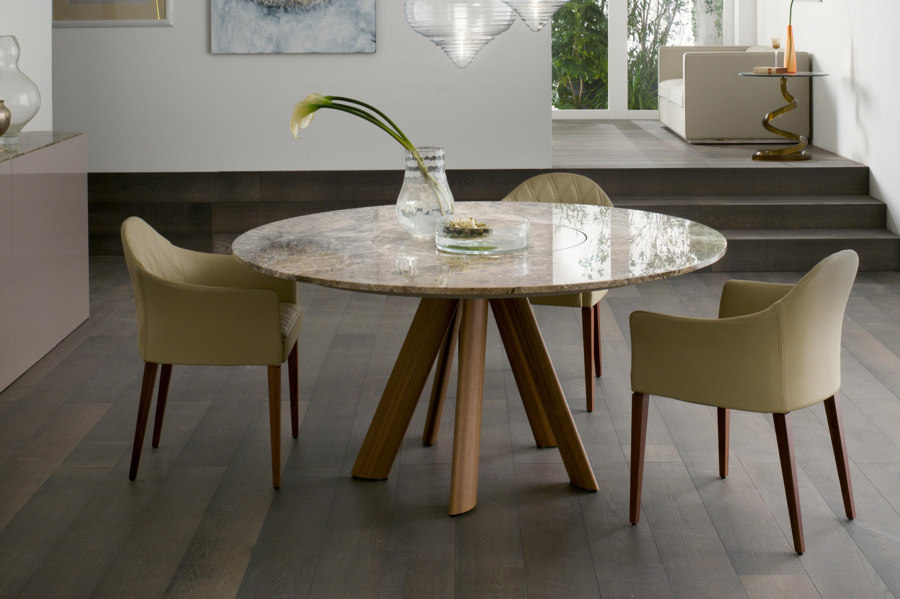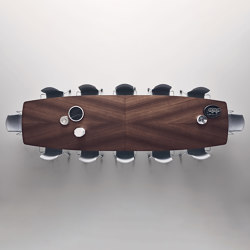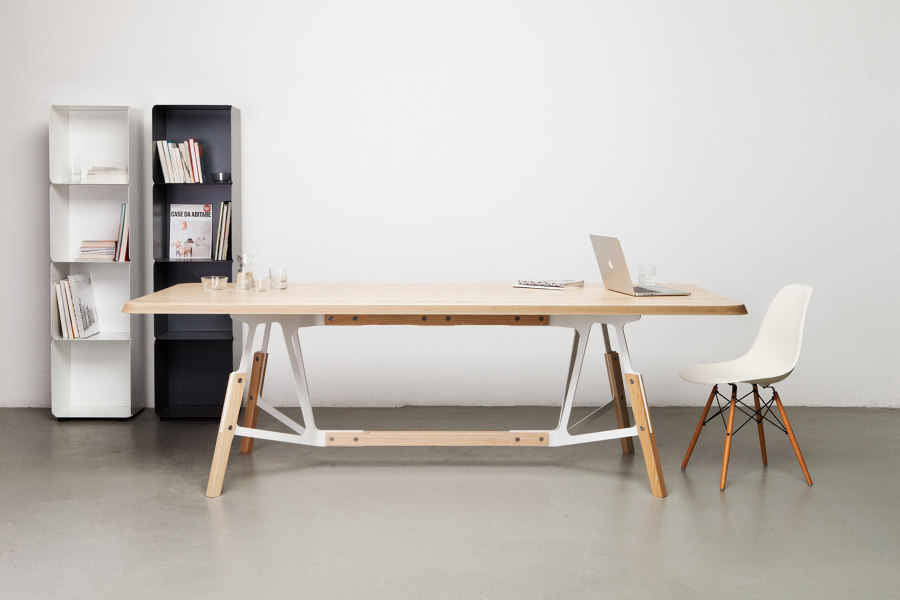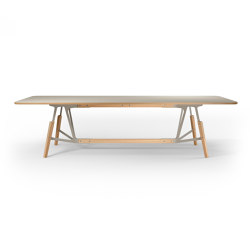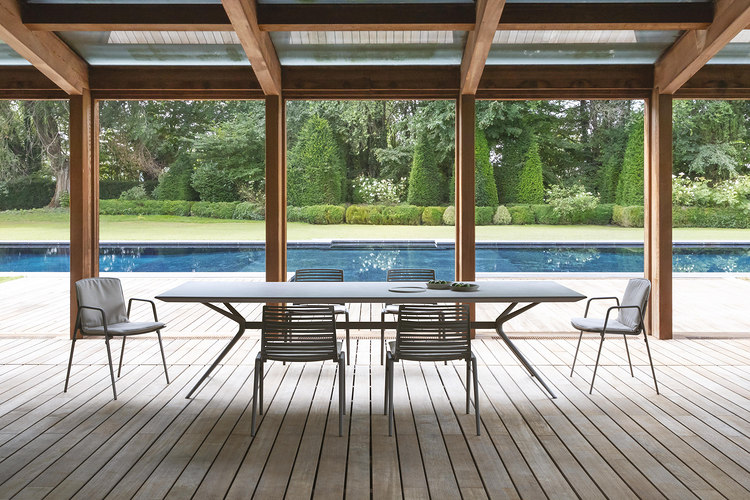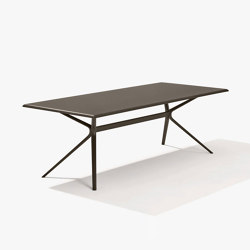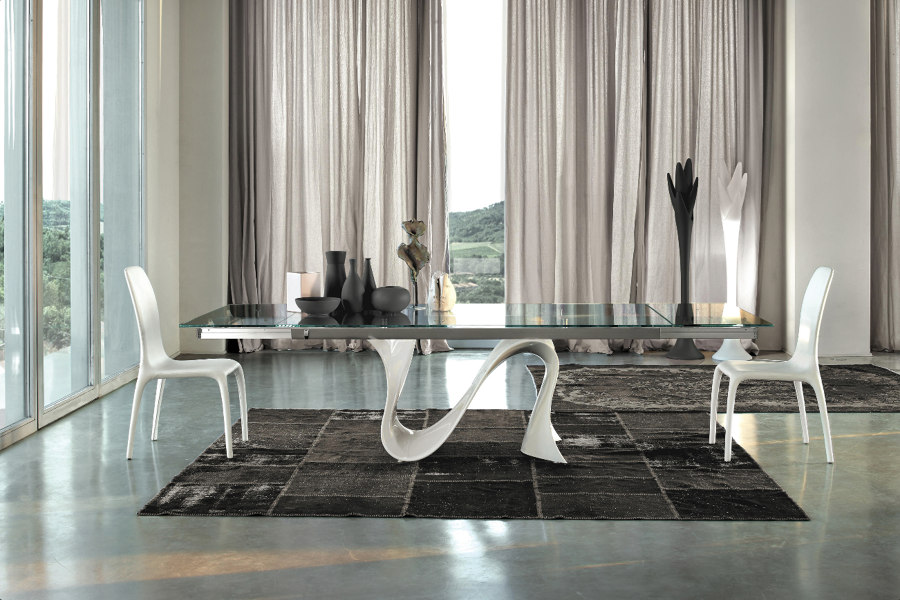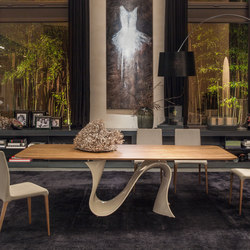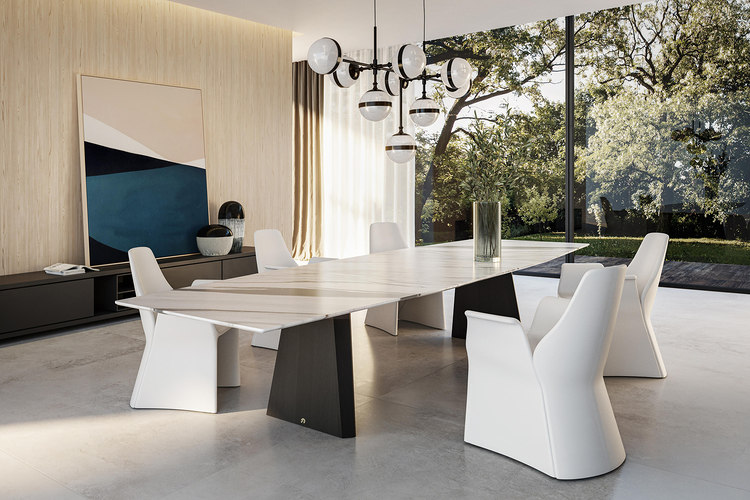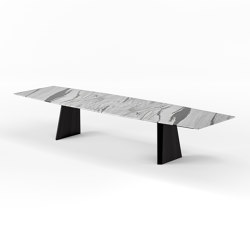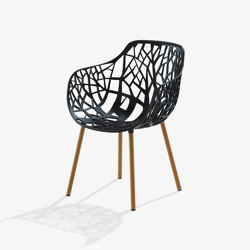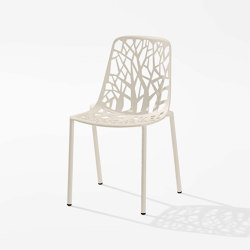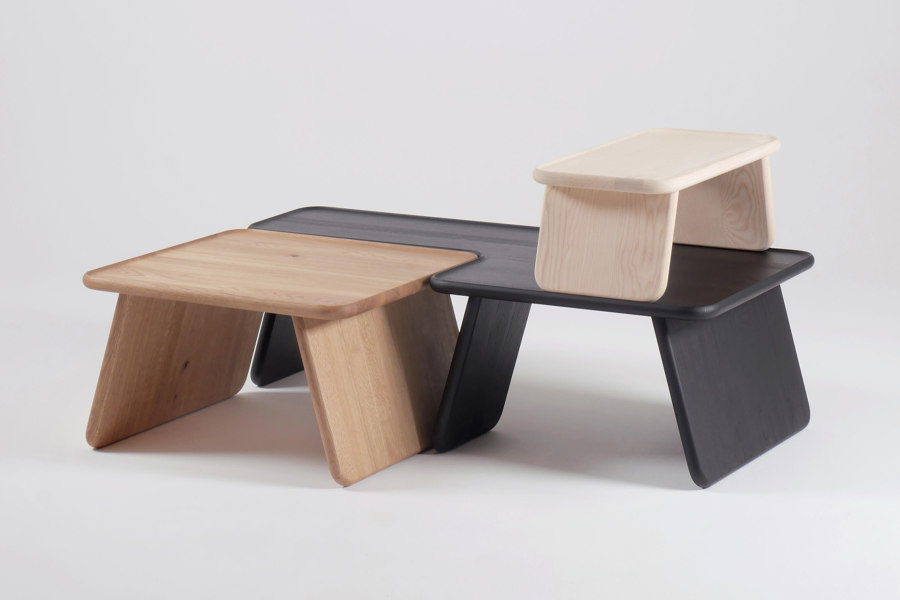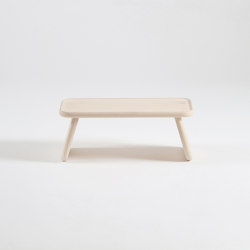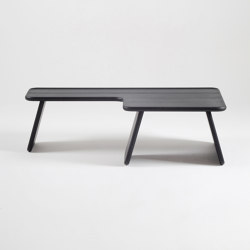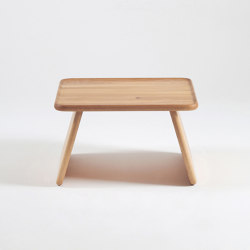Nine delectable dining tables for tasteful interiors
Texte par James Wormald
10.10.22
Dining tables are not just where we eat. In near constant use, they are the control room of the home. Where meetings are held, homework is helped and bills are paid, they hold life together.
Randers+Radius’ Grip table holds itself in a proud, stable position with a wide-legged stance, while allowing chairs to manoeuvre without obstruction under its surface
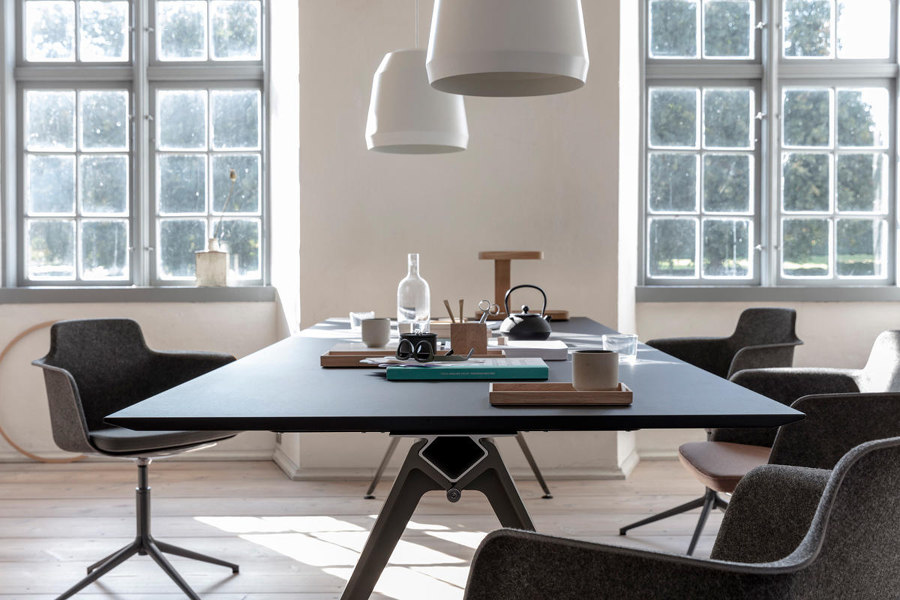
Randers+Radius’ Grip table holds itself in a proud, stable position with a wide-legged stance, while allowing chairs to manoeuvre without obstruction under its surface
×When is a dining table not a dining table? The answer is… most of the time. Whether positioned as a family hub in the open-plan or tucked away in a separate room, only cleared and adorned with the best silverware for the most judgemental of guests, dining tables are for so much more than just dining.
Used as short-term storage for mail and packages; a makeshift 9-5, or 5-9 workspace or for parents to pretend to understand a child’s homework; to quietly read the paper on a Sunday morning or to calmly craft on a Sunday afternoon, as one of the home’s main wide, flat surfaces, modern life’s dining tables wear many hats. So hitting on the right combination of shape, material and form when choosing the perfect one to suit your space, is not always easy.
The Lem 72 table’s lazy susan adds to the sociable scene around its curve (top), while Rimadesio’s Manta table (bottom) uses its naturally-patterned woodgrain tabletop as a conversation starter
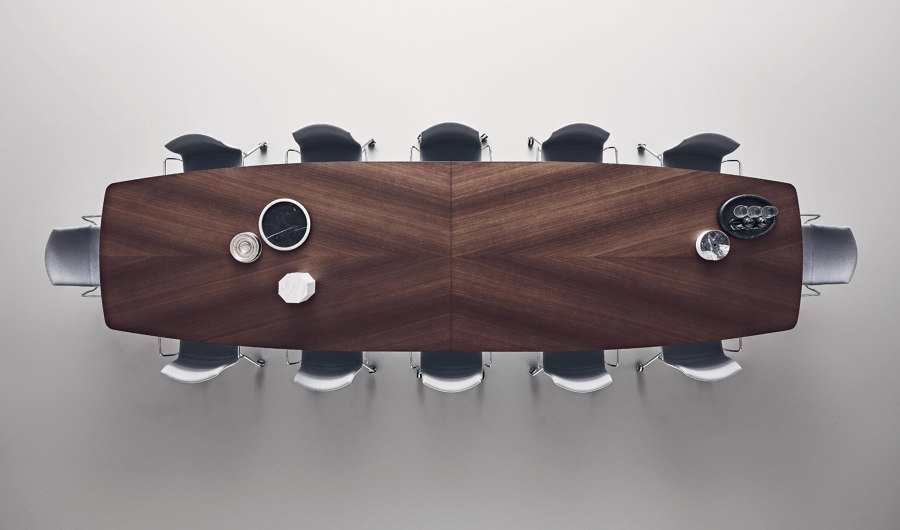
The Lem 72 table’s lazy susan adds to the sociable scene around its curve (top), while Rimadesio’s Manta table (bottom) uses its naturally-patterned woodgrain tabletop as a conversation starter
×The perfect dining table shape
Along with Camelot, round tables are suitable for most dining spaces and situations. Their efficient geometry and central support enables any number of chairs to be dealt out fairly for flexible mealtimes. The curved edge, meanwhile, encourages conversation by bringing more diners into both view and earshot. Reflex’s Lem 72 round table, for instance, features a subtly installed lazy susan for convivial interactive dining.
The curve of the table’s edge, however, also means it’s in constant retreat. With a wider reachable radius, rectilinear tables are all-rounders, suitable for more than just mealtimes. In open-plan arrangements especially, filled with other square forms like kitchen islands and sofas, a rectangular-shaped table like B&B Italia’s Oskar fits harmoniously into a homogenous floor plan, while still presenting enough graphic interest to raise the heart rate.
Colour contrast in the Stammtisch table’s base (top) highlights its use of solid wood, while both the Reale (middle) and Oskar (bottom) tables allow diners to view underneath them with a glass top
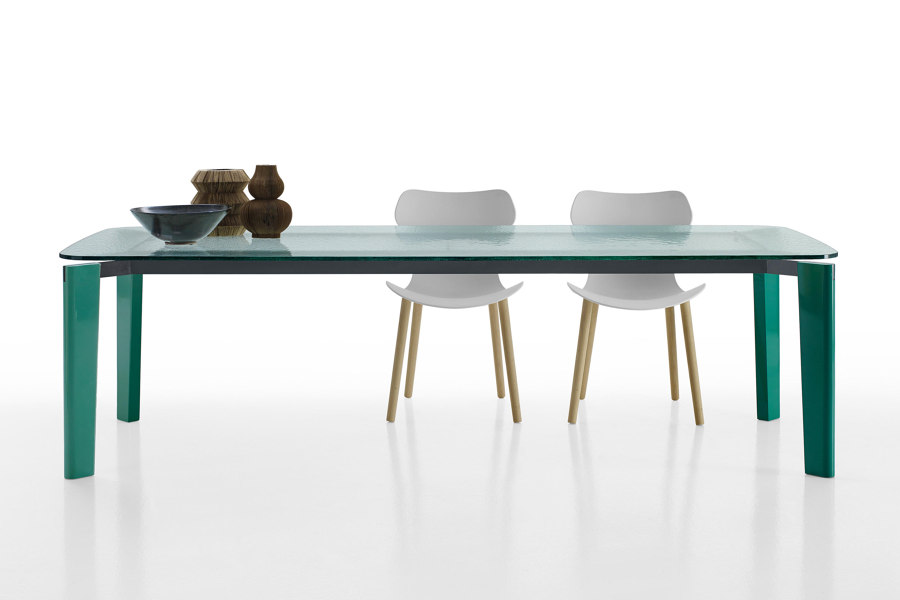
Colour contrast in the Stammtisch table’s base (top) highlights its use of solid wood, while both the Reale (middle) and Oskar (bottom) tables allow diners to view underneath them with a glass top
×Choosing dining table material
As well as fitting in with a dining space’s two-dimensional layout, the wide variety of optional dining table materials makes meeting the brief of a moodboard easy. Solid wood tables like the Stammtisch table from Quodes, for example, provide soft, natural tones for an effortless Scandi style, or the engaging patterns presented on solid wood tabletops like Rimadesio’s Manta table let nature do the talking.
Fast’s aluminium Moai table is hardy enough to be used outside and in, and light enough to move easily between the two
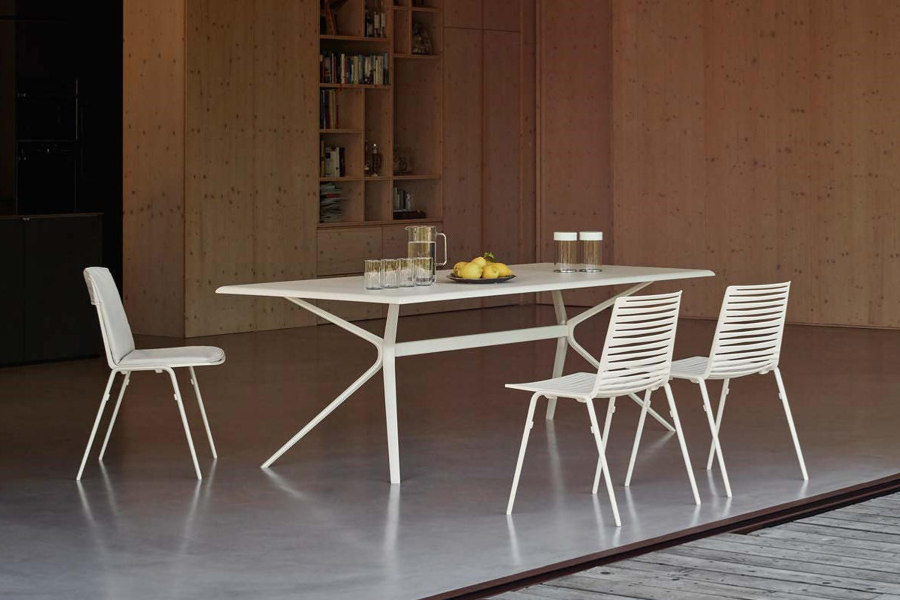
Fast’s aluminium Moai table is hardy enough to be used outside and in, and light enough to move easily between the two
×Glass tables like Zanotta’s Reale table have a more contemporary, minimalist look. Reale combines its transparent surface with an enigmatically structural wooden base for added depth and interest while retaining its lightness, exemplifying how a glass table can really make its mark. It can be easy, however, for glass table users to make their own marks in return, every smudge and fingerprint is highly visible, so they demand regular cleaning. With flexibility, functionality and, most importantly, wipeability, aluminium tables like Fast’s Moai provide more informal options yet can still retain a high-quality finish.
The Wave table’s strikingly contoured base (top) prefers sparsely-spaced seating to keep it in view, while Grip’s pitched legs (bottom) ensure it sits in perfect stability and comfort
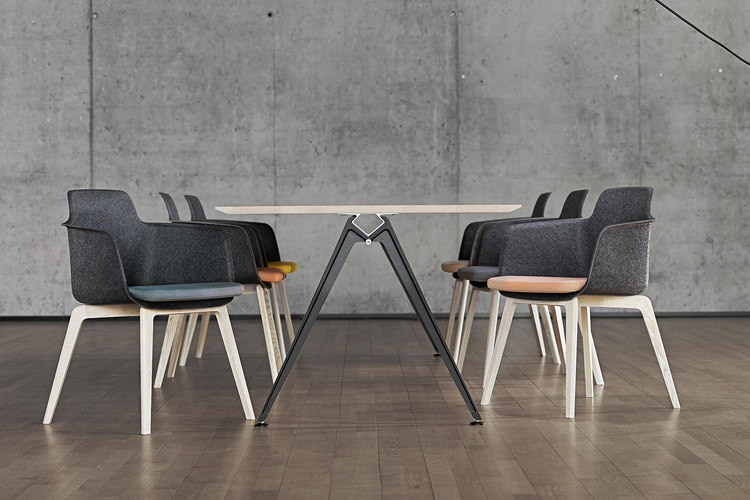
The Wave table’s strikingly contoured base (top) prefers sparsely-spaced seating to keep it in view, while Grip’s pitched legs (bottom) ensure it sits in perfect stability and comfort
×What’s under the table?
Reale’s transparent surface brings the intricate form of its base into view, whereas users of more opaque table tops can sometimes miss out. Tables with more unique base designs like Tonin Casa’s Wave table can make a huge impact, however, whatever’s above them. Turning the table into a sculptural centrepiece, more intricately styled tables are often better suited to separate dining rooms rather than shared-use spaces.
While tables with four straight-standing legs at the corners offer stability and simplicity, they can also restrict the movement, entry and exit of those seated nearby. Alternatively, central base tables like Randers+Radius’ Grip table, with its pitched legs, feature the best of both worlds. Grip provides accessibility and freedom of movement on every side, and with a wide and clean base, ensures stability in both stance and style.
Draenert’s extending Fontana table (top) and Fast’s stackable Forest chairs (middle, bottom) allow users to prepare for additional dinner guests, without ruining the decor

Draenert’s extending Fontana table (top) and Fast’s stackable Forest chairs (middle, bottom) allow users to prepare for additional dinner guests, without ruining the decor
×Extendable tables for extendable households
In life, you never know when you’ll need an extra place setting. The same is true, less metaphorically of course, for dining tables. Tables that increase in size when required, and hide the extra surface underneath when not, create a solution with few downsides. Draenert’s Fontana table, for example, features two extra sections that effortlessly fold out from the centre, the top itself sliding out to accommodate them. When a close-grain wood or busy-patterned marble top is selected, the resulting joins are near seamless.
In order to seat additional diners, additional seating is required. Stackable chairs take up less space when sitting dormant, but their increased function can come at the cost of comfort, character or, in the standard school chair example, both. With personality and variability of colour, material and arm support, however, many stackable options like the Forest dining chairs from Fast don’t look out of place at the table, even for more permanent use.
OSW’s low-level Bento tray tables combine mealtime with playtime for children, with a helpful lip to stop accidental spills turning into disasters

OSW’s low-level Bento tray tables combine mealtime with playtime for children, with a helpful lip to stop accidental spills turning into disasters
×Kids eat free: the children’s table
A kids’ table is another common solution to free-up berths around the dining table at less frequent get-togethers. But syphoning children off into another room, often at an unsuitable makeshift surface, isn’t an ideal solution. OSW’s Bento tray table is a multi-use children’s play table available in a variety of shapes and sizes that retains its usability when reappointed and repurposed as an additional solution for miniature diners. Featuring a slightly raised lip around its edge, Bento is designed like a school-dinner tray, stopping rogue rolling peas and even clumsy spills in their tracks. Let’s just hope the food provided is more edible than school dinners.
© Architonic
Head to the Architonic Magazine for more insights on the latest products, trends and practices in architecture and design.

